Part 1: Choosing Quality Flap Steak
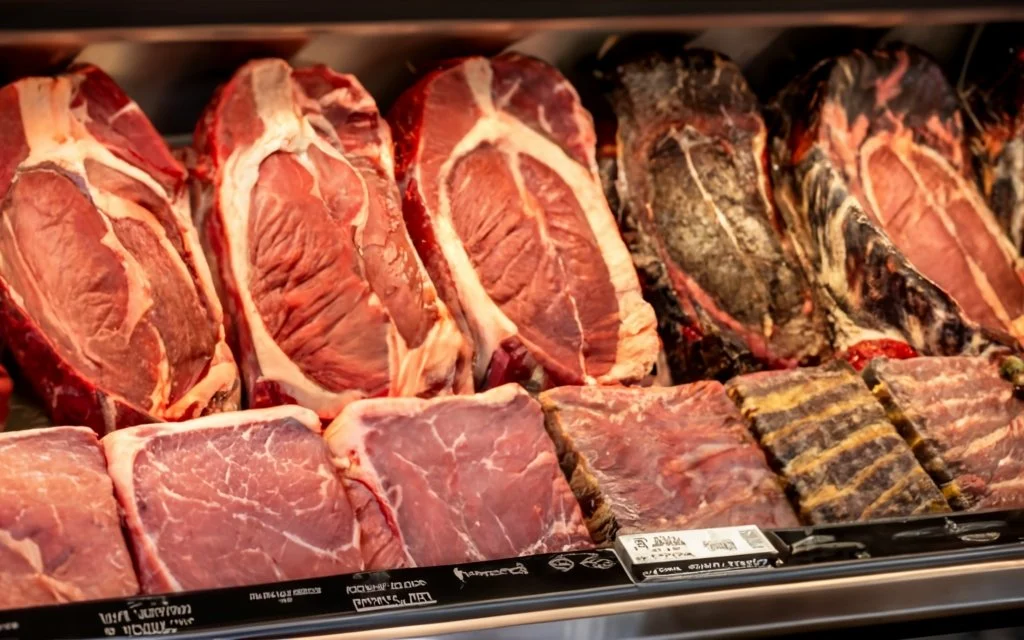
When it comes to cooking bottom sirloin butt, the first step is choosing the right cut. And let me tell you, picking a quality flap steak is more art than science. Here’s what you need to keep an eye out for Learn more about the nutritional benefits and Healthline – Beef 101: Nutrition Facts and Health Effects
- Color and Texture: Look for a vibrant, rich red color. The meat should be firm yet tender to the touch, indicating freshness and quality. Remember Flap Meat Unveiled: Cooking Tips & Recipes , the appearance of the meat can speak volumes about its taste!
- Marbling Matters: Those little streaks of fat running through the steak? That’s marbling, and it’s a game-changer. Marbling not only adds flavor but also ensures the meat stays juicy and tender during cooking. So, don’t shy away from a bit of fat!
- Size and Thickness: Flap meat comes in various sizes, but ideally, you want a cut that’s evenly thick. This ensures uniform cooking, so every bite is just as delicious as the last.
- Freshness is Key: Freshness is paramount when it comes to flap steak. A fresh cut will have a mild, meaty aroma, not an overpowering or unpleasant smell. Trust your nose; it knows!
- Ask the Expert: Still unsure? Don’t hesitate to ask your butcher. They’re the meat maestros and can guide you to the best cut for your needs.
Now that you’ve got the perfect cut, it’s time to gear up for the next step – making that flap steak sizzle with flavor!
Part 2: Tools for Making Flap Meat
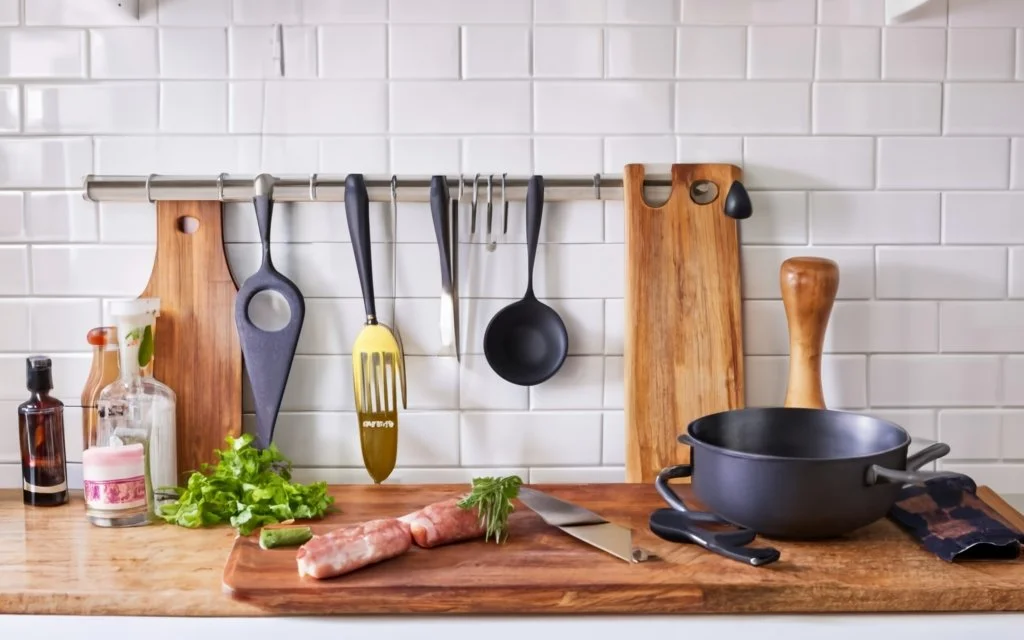
Alright, now that you’ve got your hands on some top-notch flap steak, it’s time to talk about the tools of the trade. After all, even the best chefs need the right equipment to work their magic. So, let’s get you set up!
- A Trusty Knife: First things first, a sharp knife is non-negotiable. You’ll need it for trimming any excess fat and slicing your cooked steak. A dull knife just won’t cut it – literally!
- The Cooking Surface: Whether you’re a fan of the grill or the stovetop, the choice is yours. For that irresistible charred flavor, a grill is your go-to. Prefer the indoors? A heavy skillet will serve you well. Either way, ensure it’s large enough to give your flap meat the space it deserves.
- Tongs – A Chef’s Best Friend: When it comes to flipping your steak, tongs are the MVP. They let you turn the meat without piercing it, keeping all those delicious juices locked in.
- Meat Thermometer: Don’t leave doneness to guesswork. A meat thermometer is crucial, especially if you’re aiming for that perfect medium-rare.
- Marinating Bowls and Brushes: If you’re marinating your flap meat – and you should – have some bowls and brushes on hand. They’ll make the marinating process a breeze.
With these tools at your disposal, you’re all set to tackle the main event: cooking that flap meat to perfection. And remember, the right tools not only make the job easier but also elevate your cooking game to new heights.
Part 3: Preparation Techniques for Flap Steak
Now, let’s roll up our sleeves and get into the nitty-gritty of how to cook flap meat. Preparation is key, and a few simple steps can make all the difference in flavor and texture. So, here’s how to get your flap steak ready for the culinary spotlight:
- Cleaning the Meat: Firstly, give your flap steak a good rinse under cold water. This step is crucial for removing any residual blood or impurities. Then, pat it dry with paper towels. Remember, starting with a clean slate is essential for a tasty outcome.
- The Art of Marinating: Marinating isn’t just about flavor; it’s also about tenderizing the meat. For flap steak, a marinade works wonders. You can go classic with olive oil, garlic, and herbs, or get creative with your favorite flavors. Just ensure the steak is well-coated and let it sit for at least an hour. Overnight marinating? Even better!
- Pricking for Perfection: Here’s a pro tip – before marinating, prick the steak all over with a fork. This little trick allows the marinade to penetrate deeper, ensuring every bite is infused with deliciousness.
- Room Temperature Rules: Before cooking, let the steak sit out until it reaches room temperature. This step is crucial for even cooking. Cold meat on a hot surface? That’s a recipe for toughness.
- Seasoning Right Before Cooking: Lastly, don’t forget to season your steak right before it hits the heat. A good sprinkle of salt and pepper just before cooking will enhance the natural flavors of the meat.
With your flap steak prepped and ready, you’re on the fast track to a mouth-watering meal. Stay tuned for the next part, where we’ll delve into various cooking methods to bring out the best in your flap steak.
Part 4: Flap Meat Cooking Guide
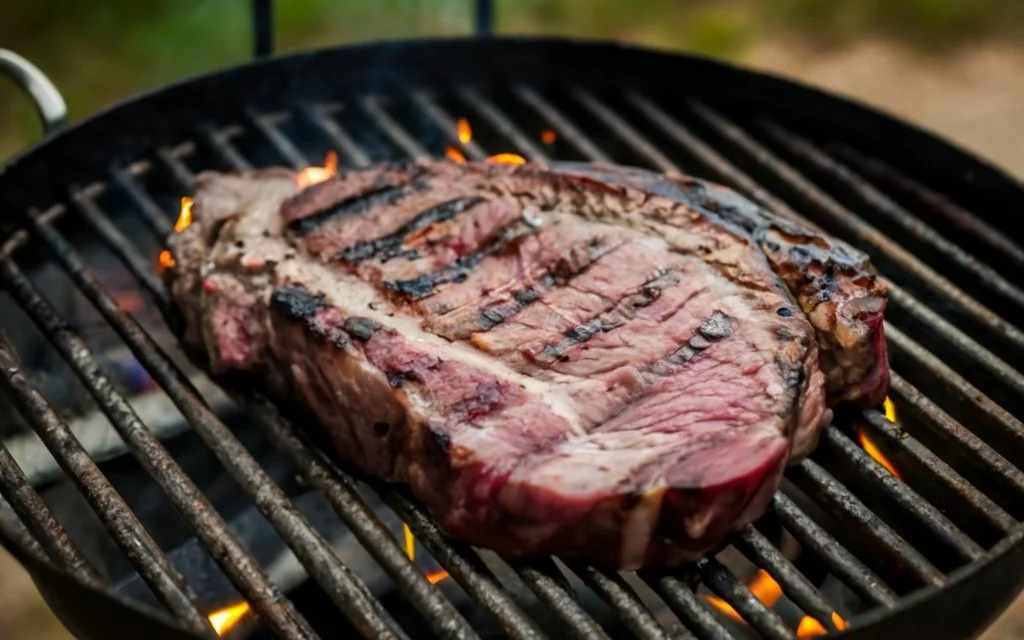
Alright, it’s showtime! You’ve prepped your flap steak, and now it’s time to turn up the heat. Cooking flap meat is where the magic happens, and there are several methods to choose from. Each technique brings out a unique flavor and texture, so let’s Exploring Piquillo Peppers: Culinary Benefits & Recipes the best ways to cook this delightful cut.
- Grilling Flap Steak: For those who love a good barbecue, grilling is the way to go. Preheat your grill to high heat. Grill the steak for about 4-5 minutes on each side for a medium-rare finish. The high heat will sear the outside beautifully while keeping the inside juicy.
- Pan-Searing: No grill? No problem! Pan-searing is equally effective. Heat a skillet over high heat and add a bit of oil. Sear the steak for a few minutes on each side. This method creates a delicious crust that’s simply irresistible.
- Oven Cooking: While not as common, oven cooking can yield tender and flavorful flap meat. Preheat your oven to 400°F (200°C), and cook the steak for about 10 minutes. This method is great for a more controlled cooking environment.
- Resting is Crucial: Regardless of the cooking method, always let your steak rest for about 5 minutes after cooking. This allows the juices to redistribute, ensuring every bite is as flavorful as possible.
- Slicing Against the Grain: Finally, when it’s time to serve, remember to slice your flap steak against the grain. This cuts through the muscle fibers, making the steak more tender and enjoyable.
And there you have it – your guide on how to cook flap meat to perfection. Whether grilled, pan-seared, or oven-cooked, flap steak is a versatile and delicious choice for any meal.
Part 5: Marinade Recipes for Flap Steak
Now, let’s spice things up a bit! A great marinade can transform your flap steak from good to gourmet. Here are some mouth-watering marinade recipes that will complement the rich flavors of your flap meat, ensuring your culinary creation is nothing short of spectacular.
- Classic Marinade: Start with the basics. Combine olive oil, minced garlic, chopped rosemary, and thyme. Add a splash of lemon juice for a bit of zest. This classic combination is foolproof and brings out the natural flavors of the steak.
- Spicy Marinade: Craving a kick? Mix soy sauce, honey, minced ginger, and a generous amount of chili flakes or hot sauce. This spicy marinade is perfect for those who like it hot and adds a beautiful caramelized crust to your steak.
- Sweet and Savory Marinade: For a balance of sweet and savory, try a blend of balsamic vinegar, brown sugar, minced garlic, and Dijon mustard. It creates a rich, complex flavor profile that’s utterly irresistible.
- Marinating Time: Remember, the longer you marinate, the more flavorful your steak will be. Aim for at least an hour, but overnight will give you the best results.
- Don’t Waste the Marinade: After removing the steak, don’t throw away the leftover marinade. Boil it down to create a delicious sauce to drizzle over your cooked steak.
With these marinade recipes in your arsenal, you’re well on your way to mastering how to cook flap meat with flair and flavor. Next up, we’ll look at the ideal cooking times and temperatures to ensure your flap steak is cooked to perfection.
Part 6: Cooking Times and Temperatures for Bottom Sirloin Butt
Nailing the perfect cooking time and temperature is crucial when it comes to how to cook flap meat. After all, nobody wants a steak that’s too tough or too rare. So, let’s break down the essentials to ensure your flap steak hits the sweet spot every time.
- For Grilling: If you’re grilling, preheat your grill to a high temperature. For a medium-rare finish, grill the steak for about 4-5 minutes on each side. This high heat will sear the outside, locking in those juicy flavors.
- Pan-Searing: When pan-searing, heat your skillet to a high temperature and cook the steak for approximately the same time as grilling. The key here is to get that beautiful crust without overcooking the inside.
- Oven Cooking: In the oven, preheat to 400°F (200°C) and cook the steak for about 10 minutes. This method is great for a more controlled and even cooking process.
- Using a Meat Thermometer: To ensure precision, use a meat thermometer. For medium-rare, aim for an internal temperature of 130-135°F (54-57°C). Remember, the steak will continue to cook a bit after it’s removed from the heat.
- Resting Time: Once cooked, let your steak rest for about 5 minutes. This allows the juices to redistribute, making every bite as flavorful as possible.
By following these guidelines, you’ll be well on your way to cooking flap meat that’s tender, juicy, and cooked just the way you like it. Next, we’ll explore some delicious serving suggestions to complement your perfectly cooked flap steak
Part 7: Serving Suggestions for Flap Meat
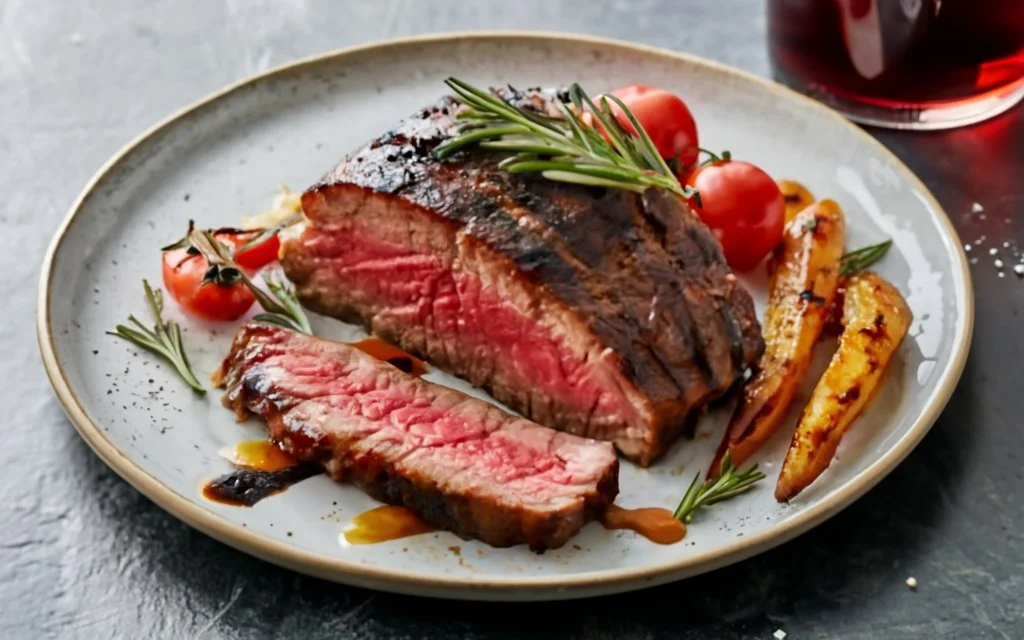
After mastering how to cook flap meat, presenting it in an appealing way is just as important. The right side dishes and presentation can transform your flap steak into a culinary masterpiece. Here are some inspired serving ideas to complement the rich and savory flavors of your flap meat.
- Classic Companions: Firstly, traditional sides like roasted vegetables, creamy mashed potatoes, or a crisp Caesar salad are always a hit. These staples not only balance the meat’s richness but also add a comforting touch to your meal.
- Innovative Twists: Additionally, why not get creative? Pair your flap steak with a tangy chimichurri sauce or a rich balsamic reduction. These bold, flavorful sauces can elevate the steak’s taste to new heights.
- Grainy Goodness: Moreover, consider lighter grain options like fluffy quinoa, aromatic rice, or delicate couscous. These grains are not only healthy but also perfect for soaking up the steak’s juices, enhancing every bite.
- Perfect Pairing with Wine: Furthermore, selecting the right wine can amplify your dining experience. A bold red wine, such as a Merlot or a Malbec, pairs beautifully with the robust flavors of flap meat.
- Eye-Catching Presentation: Finally, remember that presentation matters. Slice the steak against the grain and arrange it elegantly on the plate. Garnishing with fresh herbs or a sprinkle of sea salt can add a touch of sophistication.
With these serving suggestions, your flap meat dish is sure to be a feast for both the eyes and the palate. Next, we’ll delve into the nutritional benefits of flap steak, adding another dimension to your culinary journey.
Part 8: Health Benefits and Nutritional Value of Flap Steak
As you delve into the world of how to cook flap meat, it’s also beneficial to consider its health aspects. Flap steak isn’t just a treat for your taste buds; Nutrition Advance – 30 Types of Beef: Nutrition Facts For Every Cut it also offers several nutritional benefits. Let’s explore what makes this cut both a delicious and healthy choice.
- A Protein Powerhouse: First and foremost, flap steak is an excellent source of protein, essential for muscle growth and repair. This makes it a fantastic option for fitness enthusiasts and anyone looking to boost their protein intake.
- Rich in Vital Nutrients: Additionally, it’s packed with essential nutrients. Iron, crucial for healthy blood cells, and B vitamins, key in energy metabolism, are abundant in flap steak.
- Mindful of Fat Content: However, it’s important to be mindful of the fat content. While flap steak does contain more fat than some other cuts, incorporating it into a balanced diet can be beneficial. Moderation is key.
- Low-Carb Friendly: Furthermore, for those on a low-carb diet, flap steak is an ideal choice. It’s virtually carb-free, fitting perfectly into keto or paleo meal plans.
- Versatile for Various Diets: Lastly, flap steak’s versatility makes it suitable for a wide range of dietary preferences, whether you’re looking to Lipton Onion Soup Mix Guide
Understanding the health benefits of flap steak adds another layer of satisfaction to your culinary experience. Next, we’ll look at the best ways to store and reheat leftovers, ensuring your flap meat remains delicious for every meal.
Part 9: Storing and Reheating Leftover Flap Steak
So, you’ve mastered how to cook flap meat, and now you’re left with some delicious leftovers. Properly storing and reheating your flap steak is crucial to enjoying it just as much the second time around. Here’s how to keep your leftover flap steak tasting great.
- Storing Your Steak: First things first, let’s talk about storage. Place your leftover flap steak in an airtight container or wrap it tightly in plastic wrap or aluminum foil. Then, refrigerate it. This method helps preserve the steak’s flavor and texture.
- Reheating with Care: When it comes to reheating, the key is to do it gently. Overheating can dry out the meat and diminish its flavor. A skillet over low to medium heat works well, as does reheating it in the oven at a low temperature.
- Avoiding the Microwave: Additionally, try to avoid using the microwave if possible. Microwaving can unevenly heat the steak and affect its texture.
- Consumption Timeframe: Furthermore, it’s best to consume your reheated flap steak within 3-4 days of initial cooking. This timeframe ensures the meat remains safe to eat and retains its quality.
- Making the Most of Leftovers: Lastly, be creative with your leftovers. Sliced flap steak can be a great addition to salads, sandwiches, or even as a protein boost in your morning eggs.
By following these storage and reheating tips, you’ll ensure your flap steak remains as delicious as when it was first cooked. Next, we’ll address some common mistakes to avoid in the kitchen to help you perfect your flap steak cooking skills.
Part 10: Common Mistakes to Avoid When Cooking Flap Meat
Cooking flap meat can be a delightful experience, but it’s easy to stumble along the way. To help you avoid common pitfalls and ensure your culinary journey is smooth, here are some key mistakes to steer clear of when learning how to cook flap meat.
- Overcooking the Meat: One of the biggest mistakes is overcooking flap steak. This cut is best enjoyed medium-rare to medium. Overcooking can lead to a tough and less flavorful steak.
- Skipping the Resting Time: Additionally, don’t underestimate the importance of resting your steak after cooking. This allows the juices to redistribute, resulting in a juicier and more flavorful steak.
- Cutting the Meat Too Soon: Furthermore, resist the temptation to slice into your steak immediately after cooking. Waiting for a few minutes ensures that the juices stay within the meat, enhancing its flavor and tenderness.
- Neglecting the Grain: Also, always remember to slice your steak against the grain. This cuts through the muscle fibers, making the steak more tender and easier to chew.
- Inadequate Seasoning: Lastly, don’t skimp on seasoning. Proper seasoning before cooking brings out the natural flavors of the meat and can make a significant difference in taste.
By avoiding these common mistakes, you’ll be well on your way to cooking flap meat like a pro. Next, we’ll dive into some frequently asked questions to further enhance your understanding and skills.
Part 11: FAQs on Flap Steak Preparation
As you embark on your journey to perfect how to cook flap meat, you might have some questions. Here, we address some of the most frequently asked questions to help you navigate the process with ease and confidence.
- Can I cook flap meat from frozen? Ideally, it’s best to thaw flap meat in the refrigerator before cooking. This ensures even cooking and optimal flavor.
- What’s the best way to tenderize flap meat? Marinating is key. A good marinade not only adds flavor but also helps to tenderize the meat. Remember to slice against the grain after cooking for maximum tenderness.
- Can flap meat be used in slow-cooked dishes? While flap meat is typically best when grilled or pan-seared, it can also be used in slow-cooked dishes. However, its texture and flavor are most pronounced with quicker cooking methods.
- Is flap meat suitable for barbecuing? Absolutely! Flap meat is fantastic for barbecuing. Its texture and flavor profile make it ideal for grilling.
- How do I know when flap meat is cooked to medium-rare? Use a meat thermometer to check for an internal temperature of 130-135°F (54-57°C). This is the best indicator for a perfectly cooked medium-rare steak.
With these FAQs in your back pocket, you’re well-equipped to handle any challenges in cooking flap meat. For additional insights into beef’s nutritional value, check out the National Beef Association – Beef Nutrition Fact Sheet
Part 12: FAQs on Flap Steak Preparation
As we continue to explore the art of how to cook flap meat, it’s natural to have questions. Here, we address some additional frequently asked questions to enhance your understanding and skills in preparing this delightful cut.
- Is marinating flap meat necessary? While not strictly necessary, marinating greatly enhances the flavor and tenderness of flap meat. It’s a step worth taking for a more delectable result.
- Can I cook flap meat in a slow cooker? Yes, you can. Slow cooking flap meat can make it tender and flavorful, especially in stews or braises. However, grilling or pan-searing is preferred for a more traditional texture.
- How can I tell if flap meat is fresh? Fresh flap meat should have a bright red color, a firm texture, and a mild, not overly strong, smell. Any deviation from these indicators might suggest the meat isn’t fresh.
- What are some quick seasoning tips for flap meat? A simple seasoning of salt, pepper, and garlic powder can work wonders. For more depth, consider adding paprika or a touch of cumin.
- How long should flap meat be cooked for well-done? For well-done flap meat, cook it for about 6-7 minutes per side on high heat. However, be cautious as overcooking can lead to dryness.
With these additional FAQs, you’re now better equipped to tackle the task of cooking flap meat. Remember, cooking is as much about the journey as it is about the destination. Enjoy the process and the delicious results!
Part 13: Concluding Thoughts on Flap Meat Culinary Guide
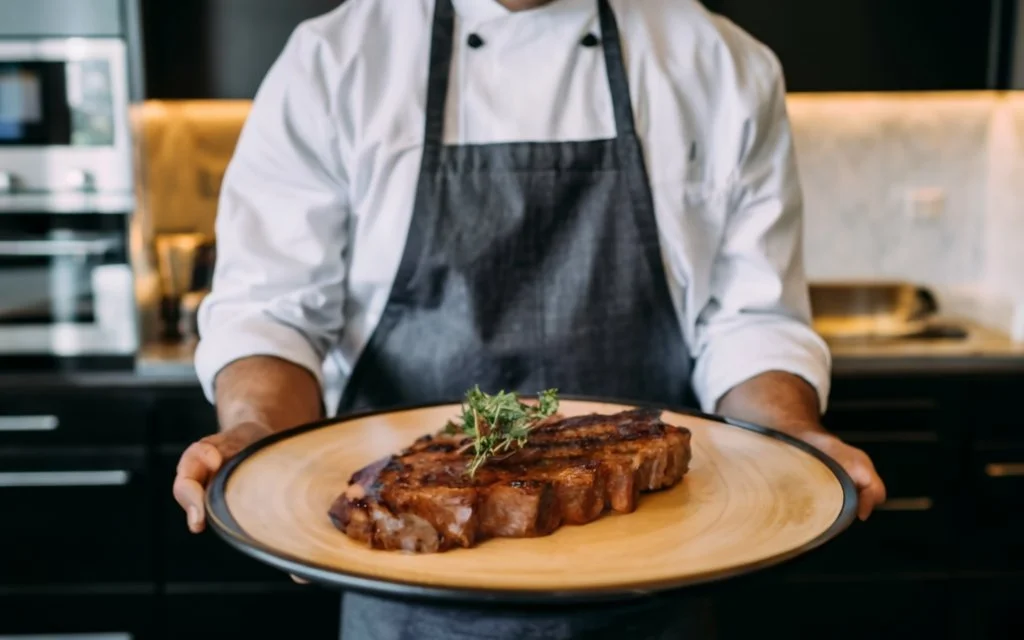
As we reach the end of our comprehensive guide on how to cook flap meat, let’s take a moment to reflect on what we’ve learned. This journey through the world of flap steak has not only been about cooking a piece of meat; it’s been about discovering the versatility and richness of a somewhat underrated cut.
In summary, the key to a perfect flap steak lies in the attention to detail – from selecting the right cut to the nuances of marinating, cooking, and serving. Remember, each step in the process contributes to the final taste and quality of your dish. Whether you’re grilling outdoors or searing in a skillet, flap meat offers a delightful experience for both the cook and the diners.
Moreover, this guide has shown that with a little patience and practice, anyone can master the art of cooking flap meat. It’s a journey filled with opportunities to experiment with flavors and techniques, leading to many satisfying meals.
So, as you continue to explore the culinary world, keep these lessons in mind. Embrace the process, experiment with confidence, and most importantly, enjoy every bite of your culinary creations. Here’s to many more delicious flap meat dishes in your future!

